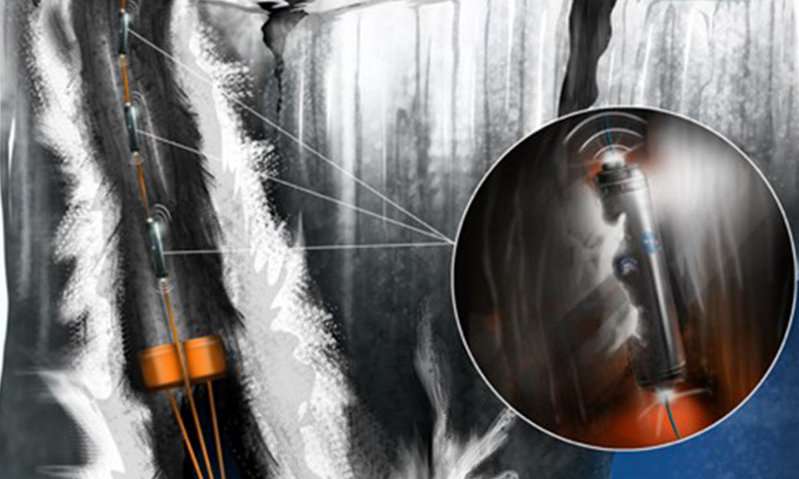A nuclear-powered 'tunnelbot' to search for life on Jupiter's icy moon Europa

Between 1995 and 2003, NASA's Galileo spacecraft made several flybys of Jupiter's moon, Europa. Several findings from observations of the moon pointed to evidence of a liquid ocean beneath Europa's icy surface. The ocean, researchers believe, could harbor microbial life, or evidence of now-extinct microbial life.
While researchers generally agree on where to look – underneath the thick, planet-wide ice shell where water is in contact with a rocky core and where biochemical ingredients for life may exist – how to get there to collect samples remains a major tactical problem.
"Estimates of the thickness of the ice shell range between 2 and 30 kilometers (1.2 and 18.6 miles), and is a major barrier any lander will have to overcome in order to access areas we think have a chance of holding biosignatures representative of life on Europa," said Andrew Dombard, associate professor of earth and environmental sciences at the University of Illinois at Chicago.
Dombard and his colleagues presented a possible solution to this problem at the American Geophysical Union meeting in Washington, D.C., this week: a nuclear-powered tunneling probe.
Dombard and his spouse, D'Arcy Meyer-Dombard, associate professor of earth and environmental sciences at UIC, are part of a group of scientists on the NASA Glenn Research COMPASS team, a multidisciplinary group of scientists and engineers tasked with designing technology and solutions for space exploration and science missions.
The group performed a concept study for a nuclear-powered "tunnelbot" that can penetrate the ice shell and reach the top of Europa's ocean while carrying devices and instruments that can be used to search for signs of life or extinct life. The bot would also evaluate the habitability of the ice shelf itself.
"We didn't worry about how our tunnelbot would make it to Europa or get deployed into the ice," Dombard said. "We just assumed it could get there and we focused on how it would work during descent to the ocean."
The bot would sample ice throughout the shell, as well as water at the ice-water interface, and would look at the underside of the ice to search for microbial biofilms. The bot would also have the capability of searching liquid water "lakes" within the ice shell.
The researchers considered two designs for their bot: one powered by a small nuclear reactor, and the other powered by General Purpose Heat Source bricks—radioactive heat source modules designed for space missions. Heat from both these sources could be used to melt the ice shell. Communications would be provided by a string of "repeaters" connected to the bot by fiber optic cables.
NASA routinely sponsors concept studies to test where the technology is that is needed to answer important questions in the solar system. Perhaps no question is more significant than, "Is there life elsewhere?" and Europa is one of the best places to look. Whether a tunneling mission is scheduled, and if so, whether one of these designs is selected, remains to be seen.
Kathleen Craft from the Applied Physics Laboratory at Johns Hopkins University and COMPASS team leads Steven Oleson and J. Michael Newman of the NASA Glenn Research Center also worked on the concept study.
Provided by University of Illinois at Chicago



















